How to Encourage Positive Interactions Between Siblings in Autism

Understanding and Supporting Siblings of Children with Autism
Having a sibling with autism presents unique challenges and opportunities for family growth. While these relationships can cultivate deep empathy, support, and lifelong bonds, they also require intentional nurturing, understanding, and communication. This article explores effective strategies, resources, and interventions, including ABA therapy, to promote positive sibling interactions, support emotional wellbeing, and manage family dynamics for healthier, more supportive sibling relationships.
Educating Siblings About Autism to Foster Empathy
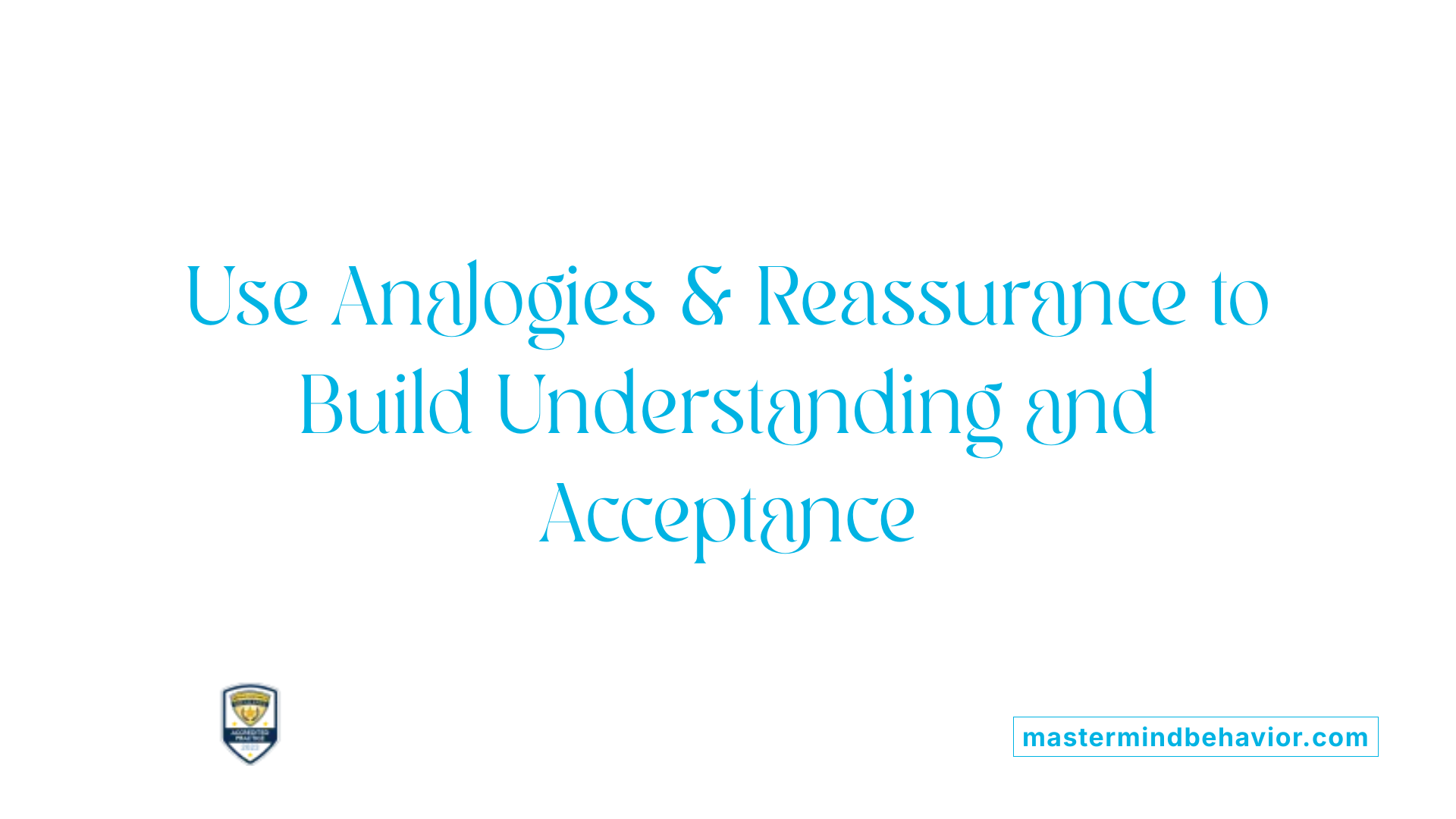
How can explaining autism to siblings promote empathy and understanding?
Providing age-appropriate explanations about autism is essential in helping siblings understand their brother or sister's unique experiences. When parents or caregivers use simple language suited to the child's developmental level, it makes complex concepts more accessible.
Making use of analogies and concrete examples can clarify what autism entails. For instance, comparing sensory sensitivities to wearing noisy, bright clothing that might feel overwhelming helps children grasp why their sibling might dislike certain sounds or textures.
Reassuring siblings that autism is not contagious and clarifying that behaviors are associated with neurological differences—not personal choices—reduces misconceptions and fears. This reassurance fosters a sense of safety and acceptance.
Encouraging open conversations about autism allows siblings to express their feelings without judgment. Validating their emotions — whether it's confusion, frustration, or pride — helps strengthen their emotional bond.
Spending quality time and involving siblings in shared activities related to understanding autism promotes empathy and patience. These strategies cultivate an environment where siblings feel empowered and understanding towards their brother or sister.
Ultimately, explaining autism clearly and compassionately encourages siblings to see their sibling as a whole person. It nurtures compassion, patience, and acceptance, forming the foundation for a stronger relationship and mutual support.
Supporting Emotional Wellbeing and Open Communication
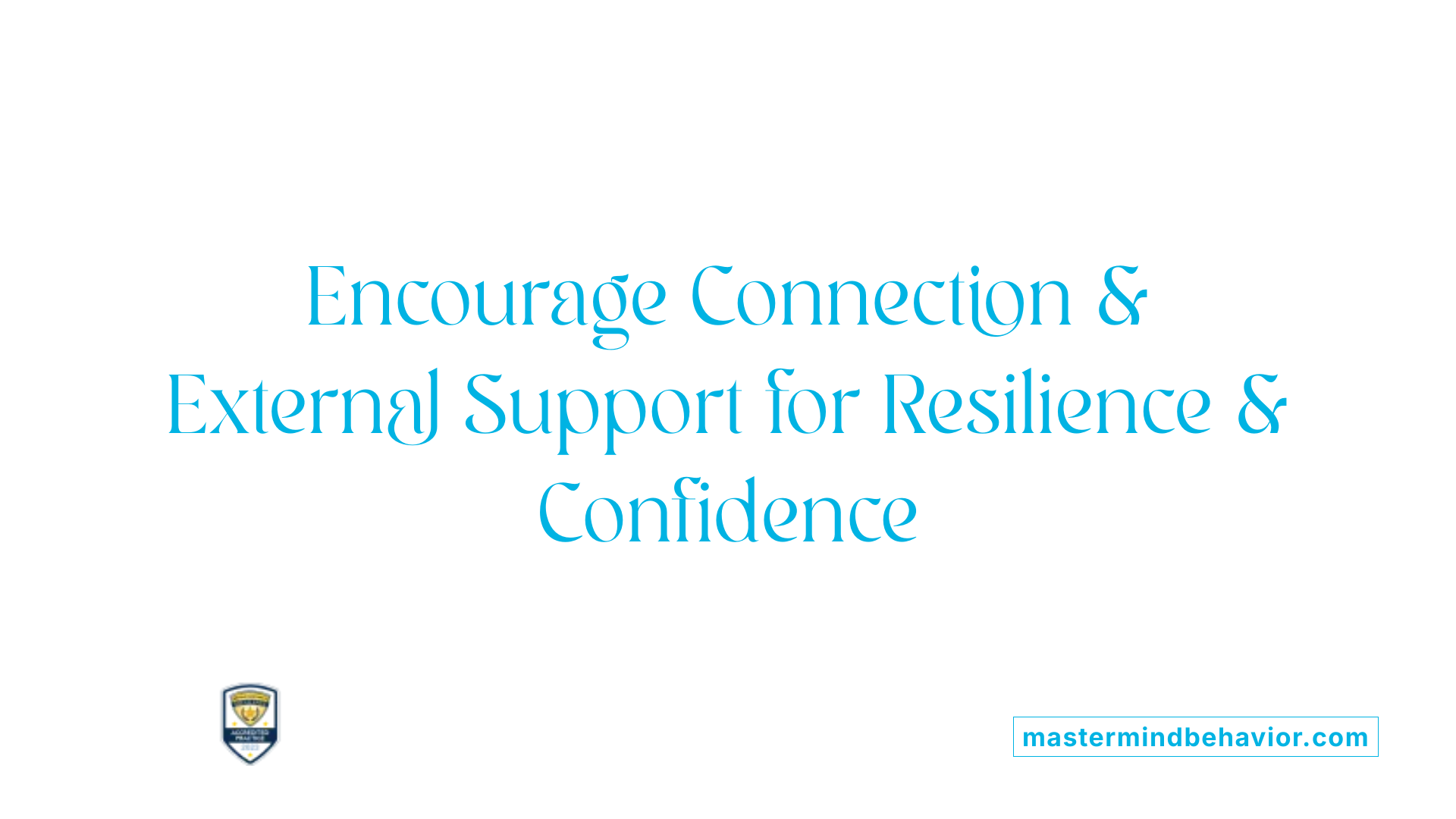
How can I support siblings' emotional wellbeing and understanding of their feelings when they have a sibling with autism?
Supporting siblings' emotional health when they have a brother or sister with autism requires a thoughtful approach. First, providing age-appropriate education about autism helps siblings understand their sibling’s challenges and strengths. Simplified explanations for younger children and more detailed descriptions for older ones make information accessible and prevent misconceptions.
Encouraging open dialogue is equally important. Creating a safe environment where siblings feel comfortable sharing their feelings—such as frustration, confusion, or pride—fosters emotional expression. Validation of their emotions helps them feel heard and supported.
Activities that promote sibling bonding, like shared hobbies or special one-on-one time, strengthen relationships. Recognizing their achievements and encouraging participation in family routines boosts their confidence and sense of normalcy.
External support networks like peer groups and professional counseling provide additional emotional backing. These resources allow siblings to connect with others facing similar situations, reducing feelings of isolation.
Finally, involving siblings in the family’s routines and emphasizing resilience underscores the importance of their role within the family. Such inclusion promotes emotional stability and helps siblings adapt positively while maintaining their mental health and wellbeing.
Encouraging Fun and Shared Activities
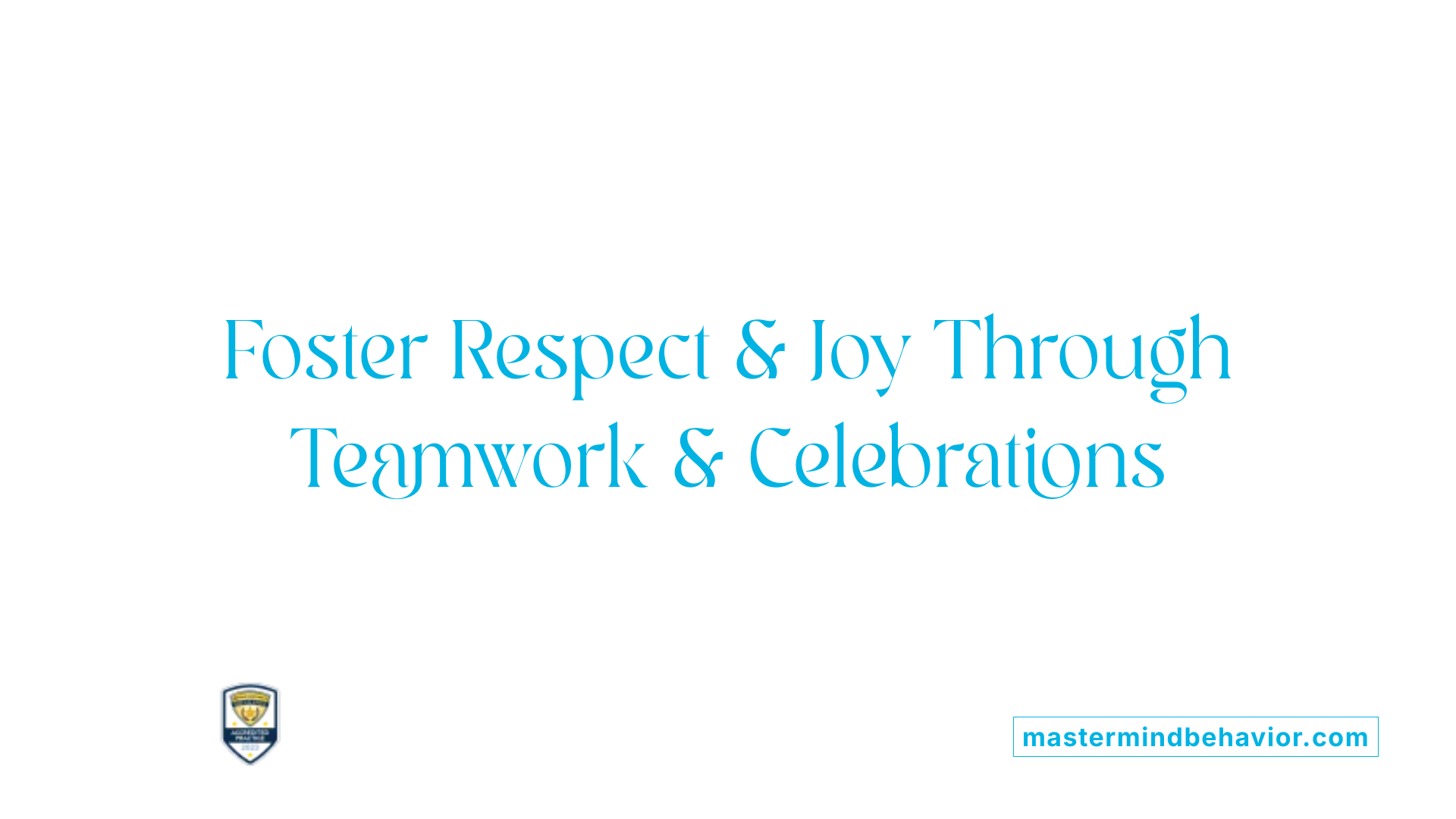 Supporting siblings of children with autism can be greatly enhanced through shared activities that foster bonding and understanding. Organizing structured games, outdoor play, or arts and crafts such as drawing or sensory activities encourages positive interactions and helps develop social skills. These shared experiences can be tailored to ensure both siblings feel included and valued.
Supporting siblings of children with autism can be greatly enhanced through shared activities that foster bonding and understanding. Organizing structured games, outdoor play, or arts and crafts such as drawing or sensory activities encourages positive interactions and helps develop social skills. These shared experiences can be tailored to ensure both siblings feel included and valued.
Involving siblings in daily routines and therapy sessions, like ABA activities, helps them understand their brother or sister's needs while promoting teamwork. Small roles in caregiving or at-home activities can also make siblings feel important and connected.
Celebrating individual strengths and shared interests further boosts sibling relationships. Recognizing each child's unique talents—whether in sports, arts, or academics—along with engaging in joint hobbies like puzzles or outings, nurtures mutual respect and affection.
Creating an environment that promotes open communication, understanding, and fun is vital. By integrating these shared activities into everyday life, families can build stronger, more supportive bonds among siblings, enriching their emotional well-being and fostering lifelong connections.
Leveraging Intervention Strategies like ABA Therapy
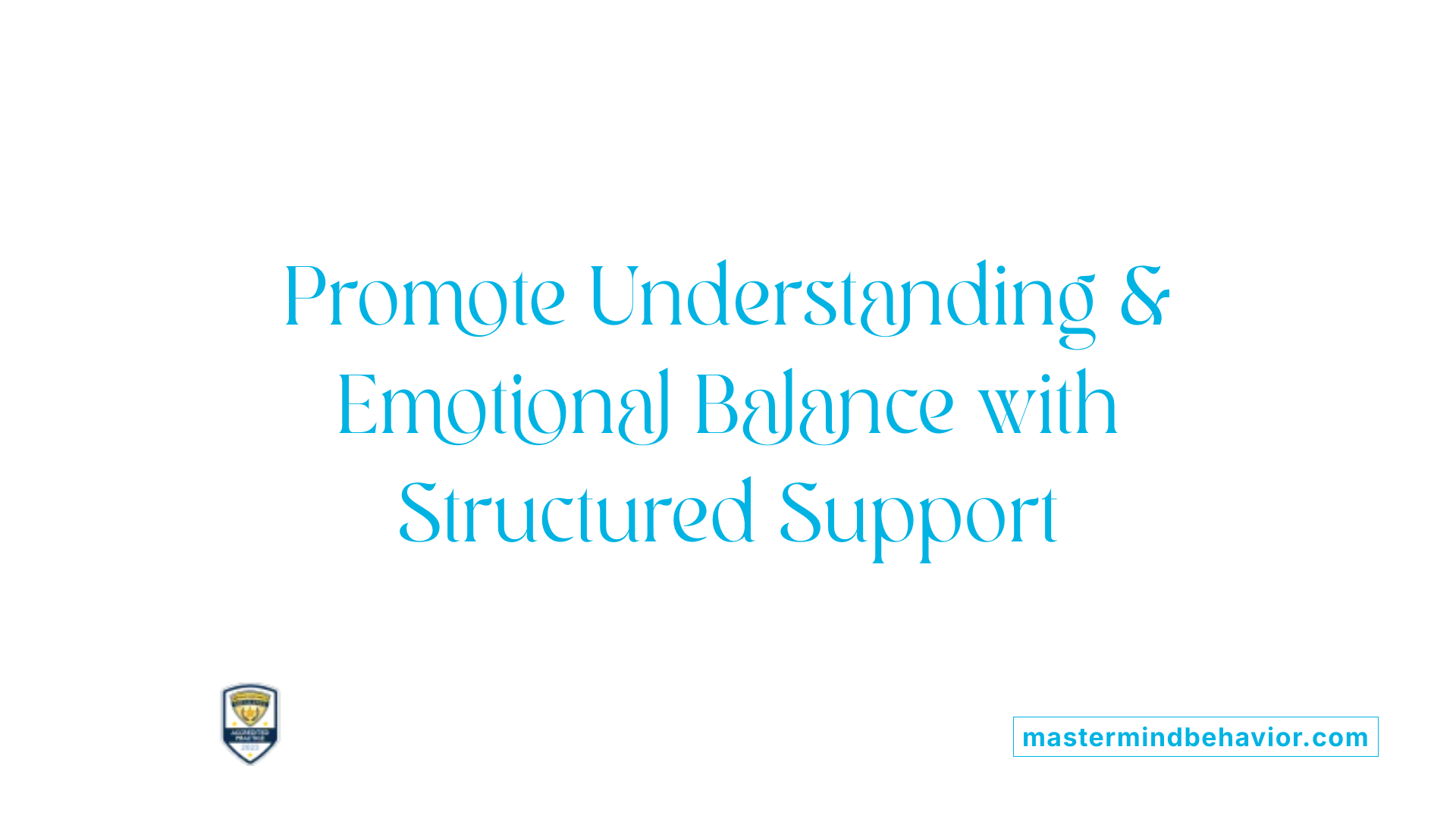
How do intervention strategies, such as ABA therapy, contribute to improving sibling interactions?
Applied Behavior Analysis (ABA) therapy plays a crucial role in enhancing sibling relationships within families affected by autism. By focusing on observable behaviors, ABA utilizes techniques such as modeling, prompting, and positive reinforcement to improve communication and social skills in children on the spectrum.
When siblings participate in ABA sessions or learn ABA principles to apply at home, they develop a deeper understanding of autism and its behaviors. This understanding fosters empathy, patience, and more respectful, positive interactions.
Family-based ABA approaches emphasize involving parents and siblings actively in the therapy process. This collaborative effort encourages consistent routines and expectations, which help create a stable environment where siblings can connect more effectively.
Moreover, ABA strategies assist in managing emotional and behavioral challenges, promoting emotional regulation among children. This reduces conflicts and misunderstandings, leading to healthier sibling relationships.
In summary, ABA therapy enhances sibling interactions by teaching social and communication skills, promoting family involvement, and supporting emotional well-being. Such integrated approaches strengthen family bonds and create a supportive environment where siblings can flourish collectively.
Managing Family Dynamics for Better Sibling Bonds
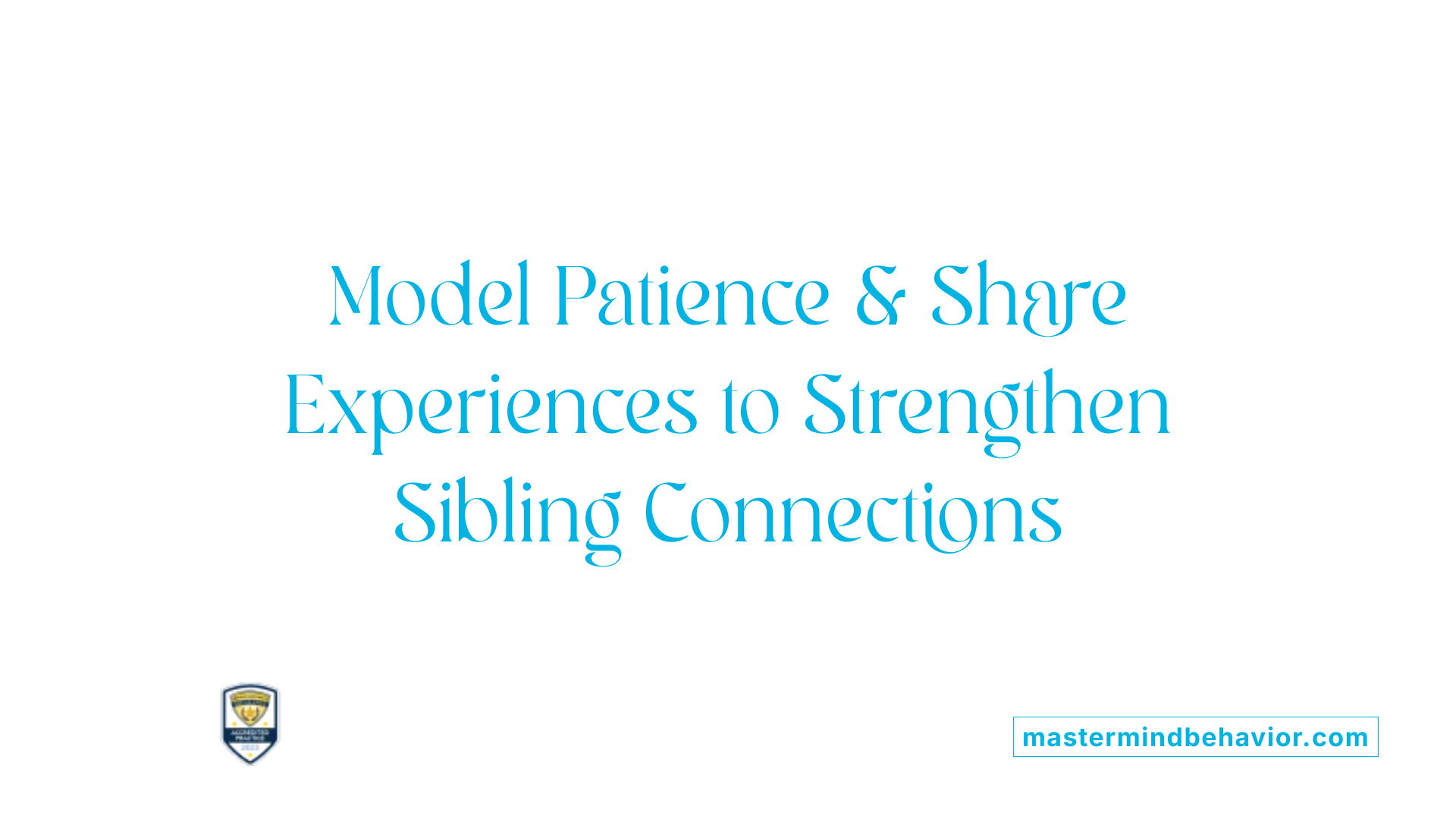
How can family dynamics be managed to improve sibling relationships?
Effective management of family dynamics is crucial for fostering healthy relationships between siblings, especially in families with a child with autism. Creating an environment of fairness and support helps children feel valued and respected.
Parents should aim to establish routines and responsibilities that are equitable for all children. This means assigning age-appropriate chores and roles that encourage independence while avoiding favoritism. Consistent routines provide predictability, helping siblings feel secure and understood.
Open communication plays a vital role. Encouraging siblings to express their feelings and concerns allows issues like jealousy or resentment to surface and be addressed constructively. Teaching conflict resolution skills, such as taking turns, listening, and using calm words, enhances their ability to resolve disagreements amicably.
Modeling positive behaviors is also essential. Parents and caregivers should demonstrate respectful interactions, patience, and empathy during conflicts. This sets a standard for siblings to emulate.
Addressing differential treatment thoughtfully can prevent feelings of unfairness. Parents should explain why certain needs or behaviors might warrant different responses, ensuring children understand these distinctions are based on individual circumstances rather than favoritism.
Shared activities that all children enjoy—like playing games, doing arts and crafts, or outdoor adventures—foster teamwork and warmth. Celebrating each child's unique interests and achievements promotes genuine appreciation and camaraderie.
In summary, managing family dynamics involves balancing fairness with understanding, nurturing open dialogue, modeling positive interactions, and promoting shared experiences. These strategies can greatly enhance sibling bonds, contributing to healthier emotional and social development over time.
Addressing Challenging Feelings and Behavioral Issues
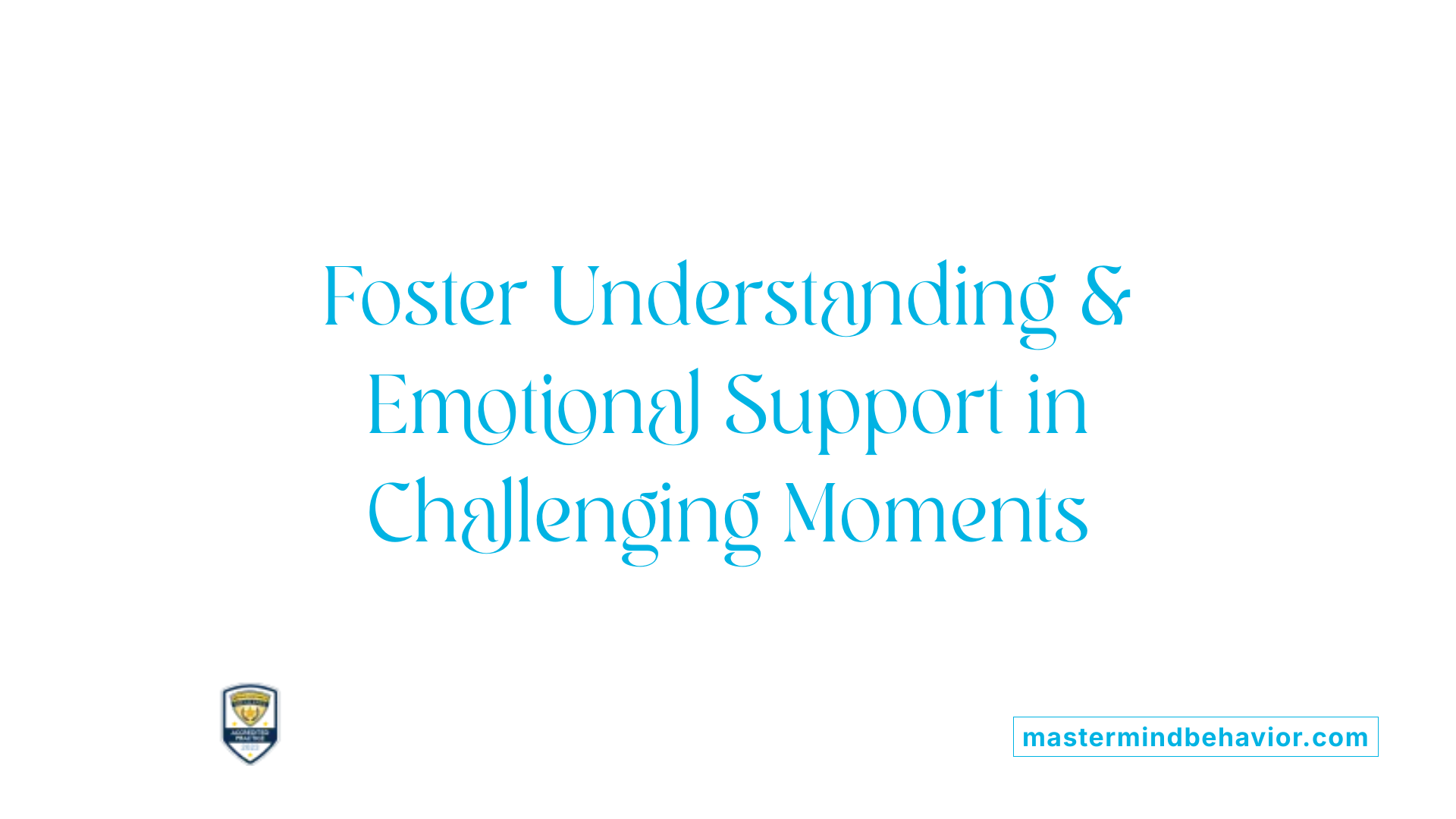
How do I address challenges like aggression or difficulty in sibling relationships involving autistic children?
Dealing with conflict, such as aggression or difficulties between siblings of children with autism, requires a compassionate and strategic approach. It starts with open and honest conversations tailored to each child's developmental level, helping siblings understand autism and recognize that behaviors like meltdowns or irritability are not intentional.
Providing individual attention to each sibling helps them feel valued and reduces feelings of neglect, which can sometimes lead to resentment. Engaging in shared activities—like puzzles, drawing, or outdoor play—fosters positive interactions and builds bonds.
Involving siblings in support groups such as SibShops, or participating in family-centered programs like the UMass Chan support initiative, offers a safe space for emotional expression, coping strategies, and peer support.
Encouraging siblings to articulate their feelings openly in a judgment-free environment can lessen anxiety and emotional distress. Creative outlets such as art, storytelling, or sports can help manage strong emotions.
Creating routines that include 'special time' with each child contributes to a sense of security and inclusion. Celebrating their individual strengths and interests promotes self-esteem and a sense of fairness.
Ultimately, fostering understanding, patience, and compassion within the entire family creates a supportive environment. External professional help from therapists or counselors can also provide tailored strategies to address ongoing behavioral challenges, ensuring all children feel supported and connected.
Building Support Networks and Community Resources
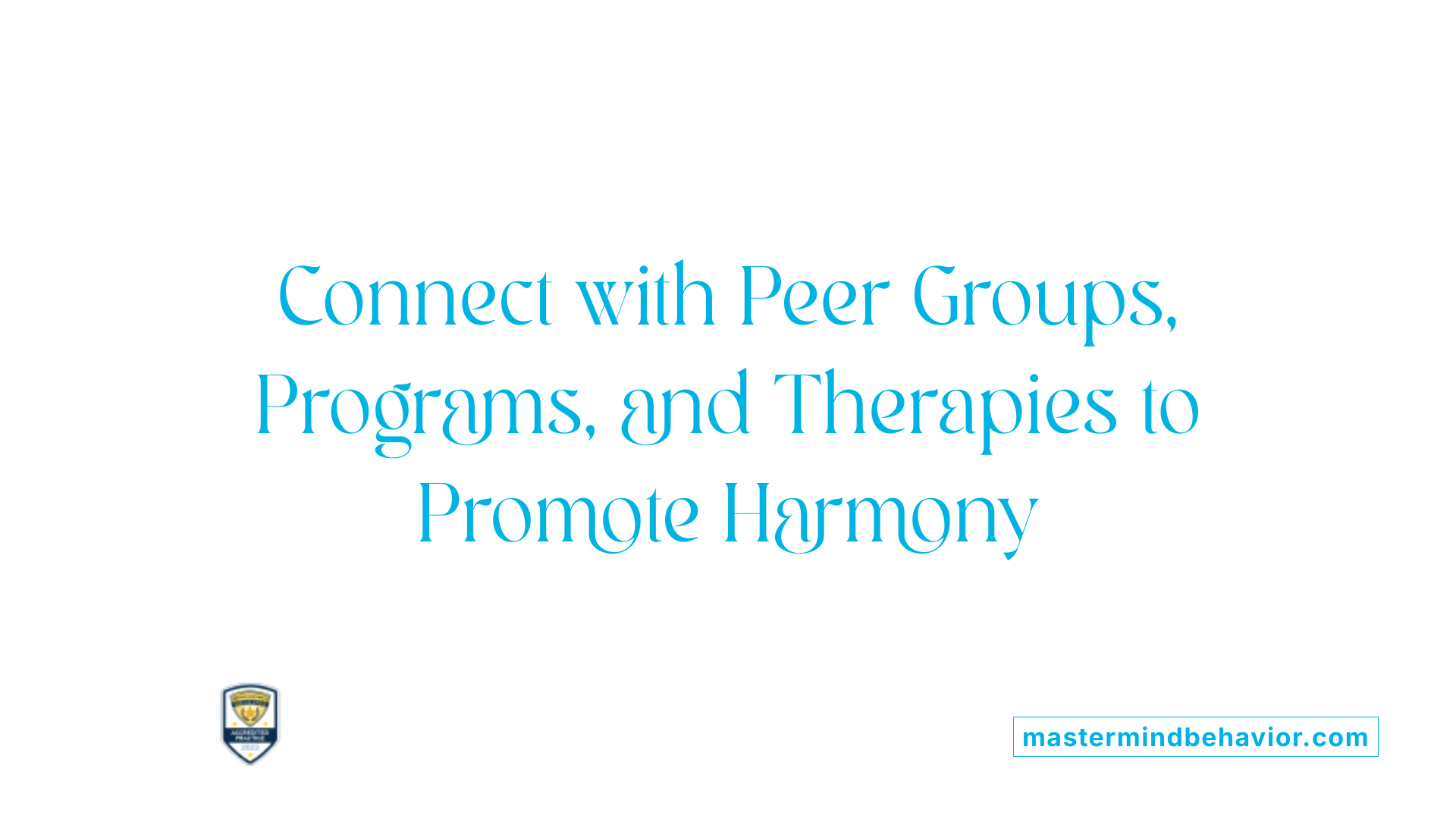
What resources are available to parents and caregivers to promote positive sibling interactions?
Parents and caregivers have several supportive tools and programs at their disposal to help nurture healthy relationships between siblings of children with autism. Educational materials such as books, tip sheets, and online guides provide practical advice on managing sibling dynamics, emphasizing the importance of fair treatment, open communication, and conflict resolution.
Support groups like SibShops and online communities serve as valuable platforms where siblings can connect with peers, share experiences, and gain emotional support. These groups often organize activities and discussions that help siblings understand autism better, fostering empathy and patience.
Specialized programs such as Parenting NI and the Massachusetts Sibling Support Network offer tailored interventions aimed at enhancing family interactions. Programs like "More Fun with Sisters and Brothers" promote shared activities and teach parents ways to involve siblings in routines and caregiving tasks responsibly.
Family-centered counseling and family support programs are also instrumental in addressing emotional challenges. They facilitate open discussions about feelings, misconceptions, and frustrations, helping build resilience and understanding within the family.
Community resources extend further by providing access to recreational activities, therapy services, and social skills training. These resources reinforce the importance of creating environments that support positive sibling bonds and overall family well-being.
| Resource Type | Examples | Purpose |
|---|---|---|
| Support Groups | SibShops, Online Communities | Peer support and sharing experiences |
| Educational Materials | Books, Tip Sheets | Teaching about autism and sibling dynamics |
| Family Programs | "More Fun with Sisters and Brothers" | Promoting shared activities and teamwork |
| Counseling Services | Family therapy, professional counseling | Emotional support and conflict resolution |
| Community Activities | Local recreation, social skills groups | Strengthening social bonds and inclusion |
Utilizing these resources helps families create a supportive environment, encouraging positive interactions and emotional growth for all children involved.
The Long-Term Impact of Positive Sibling Relationships and Future Directions
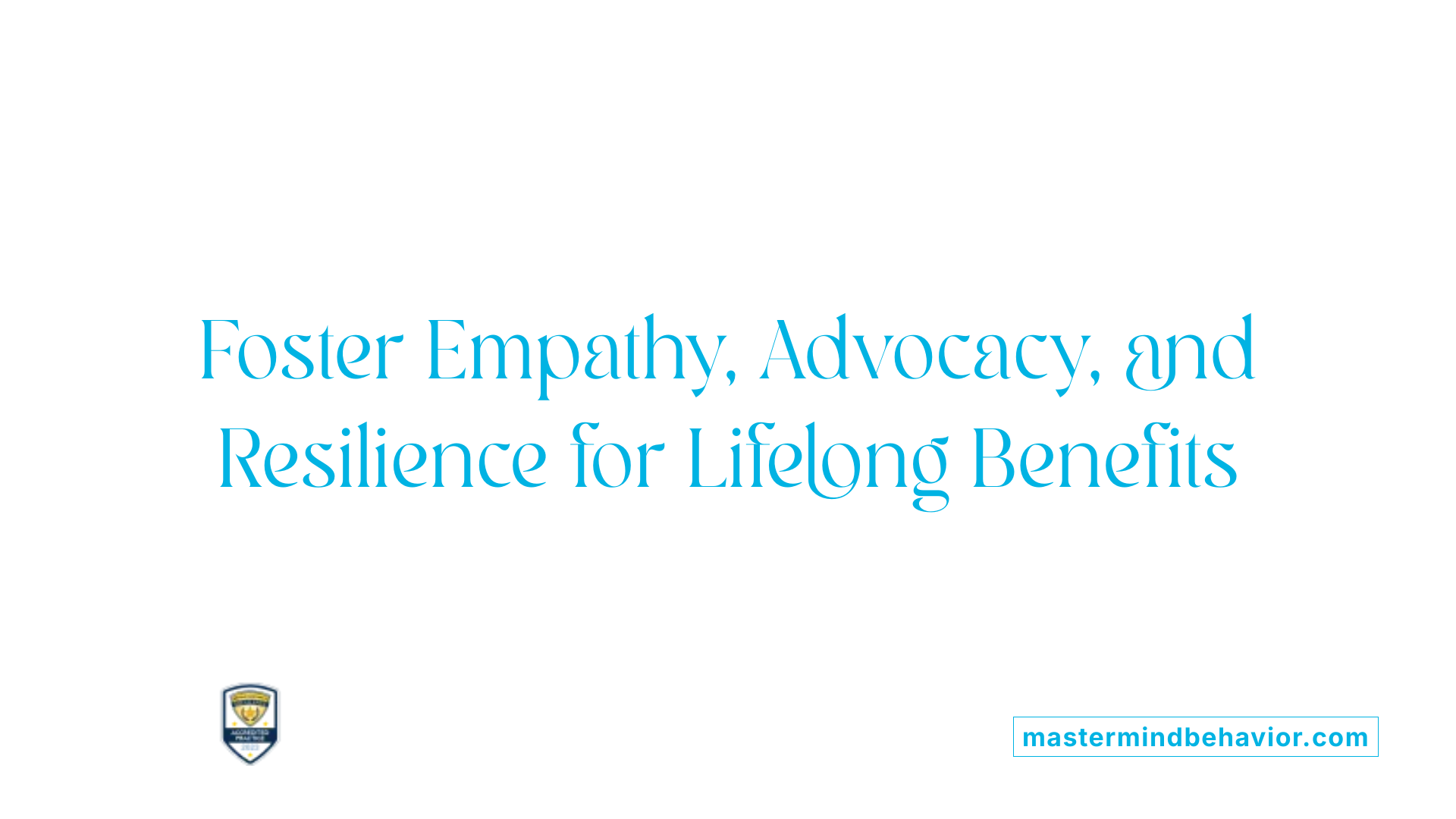
What are the long-term benefits of positive sibling relationships in autism?
Research shows that most siblings of children with autism develop qualities such as compassion, patience, and a strong desire to help others. Many of these siblings are inspired to pursue careers or activities that aid others, reflecting positive long-term outcomes.
Healthy sibling relationships foster empathy, social understanding, and emotional regulation skills. These abilities not only improve personal development but also lay a foundation for healthier adult relationships and active community participation.
Positive interactions between siblings can serve as lifelong support systems, encouraging mutual assistance and advocacy. This can strengthen resilience, boost confidence, and promote personal growth for both siblings and their autistic brothers or sisters.
Future research should prioritize longitudinal studies that track sibling relationships over time to better understand their evolving dynamics.
Understanding the variability within sibling relationships—taking into account individual differences and cultural contexts—is crucial.
Developing culturally sensitive interventions and family programs can help deepen these positive outcomes, ensuring support strategies are effective across diverse populations.
| Aspect | Impact | Additional Notes |
|---|---|---|
| Emotional skills | Empathy and patience | Fostered through shared experiences and understanding of autism |
| Career development | Helping professions | Many siblings are motivated to enter healthcare, education, or advocacy fields |
| Community involvement | Support networks | Siblings often become lifelong advocates for inclusion and acceptance |
| Psychological resilience | Better coping skills | Building confidence and managing stress through sibling bonds |
| Social understanding | Increased awareness | Enhanced through shared activities and open communication |
By focusing on these long-term benefits, families and practitioners can better support sibling relationships, nurturing strengths that extend well into adulthood.
More info: Search for "Long-term outcomes of sibling relationships autism" for detailed studies and insights.
Nurturing Bonds for Lifelong Growth
Fostering positive sibling interactions in families with children on the autism spectrum is essential for emotional development, family harmony, and the lifelong bonds that support mutual growth. Through education, open communication, shared activities, and family-wide strategies—including the integration of intervention models like ABA—parents and caregivers can create a nurturing environment that promotes understanding, patience, and love. Utilizing community resources and fostering resilience ensures that these relationships flourish, enriching the lives of all siblings and strengthening family unity, now and into the future.
References
- Supporting Sibling Relationships in Autism Families Using ABA
- 6 Ways to Support Siblings of Autistic Children
- How to Manage the Impact of Child With Autism on Siblings
- Sibling Support in Autism: How to Foster Understanding and ...
- Autism and Sibling Relationships: A Parent's Guide
- Helping Siblings Understand Autism: Building Positive Relationships
- Siblings of Youth with Autism Spectrum Disorders - PubMed Central
Recent articles

How to Teach Time Management Skills Using ABA Therapy
Enhancing Independence through Effective Time Management Strategies in ABA

The benefits of telehealth ABA therapy
Transforming Autism Care Through Remote Therapy Solutions

How to Celebrate Small Wins in ABA Therapy Progress
Celebrating Every Step: A Guide to Recognizing Progress in ABA Therapy

The Importance of Consistency Between Therapists and Parents
Fostering Trust and Growth Through Consistent Care

Supporting Your Child’s Social Development through Behavioral Therapy
Empowering Positive Change in Children's Social Skills

Why Individualized Treatment Plans Matter in ABA Therapy
Unlocking Success: The Power of Personalized ABA Plans



